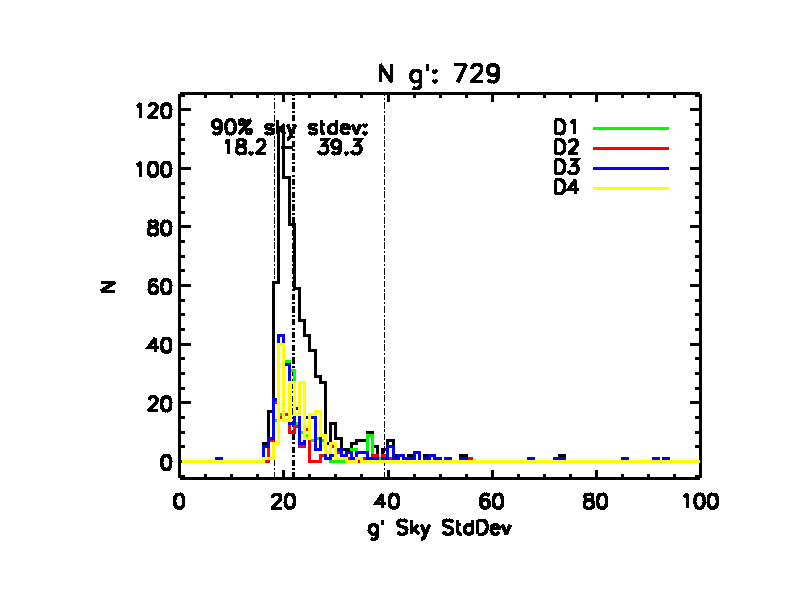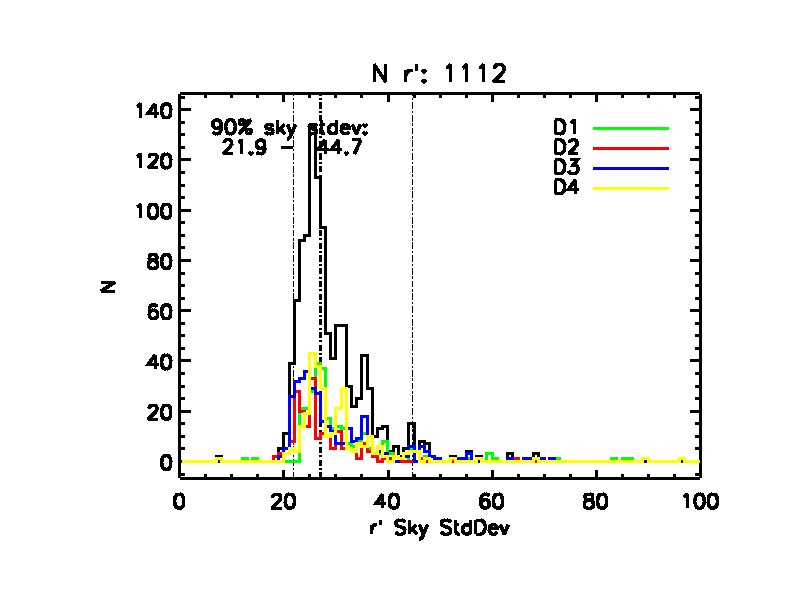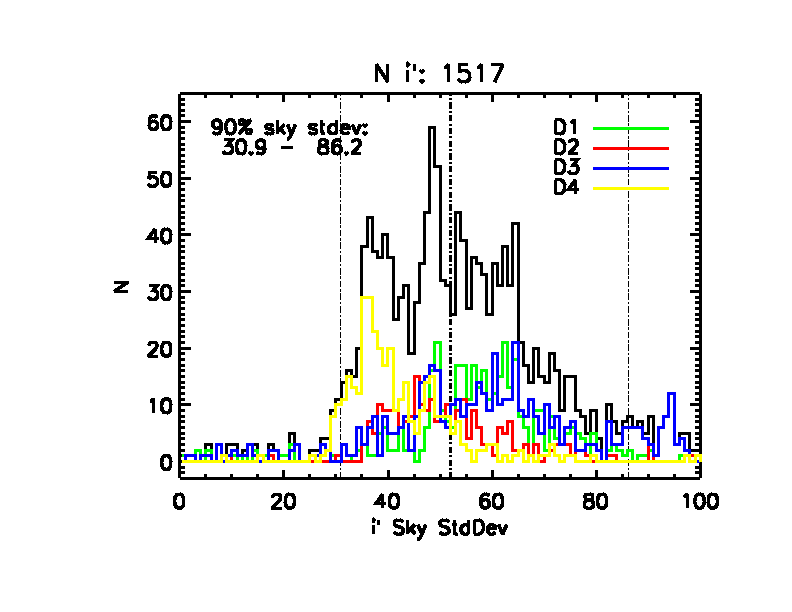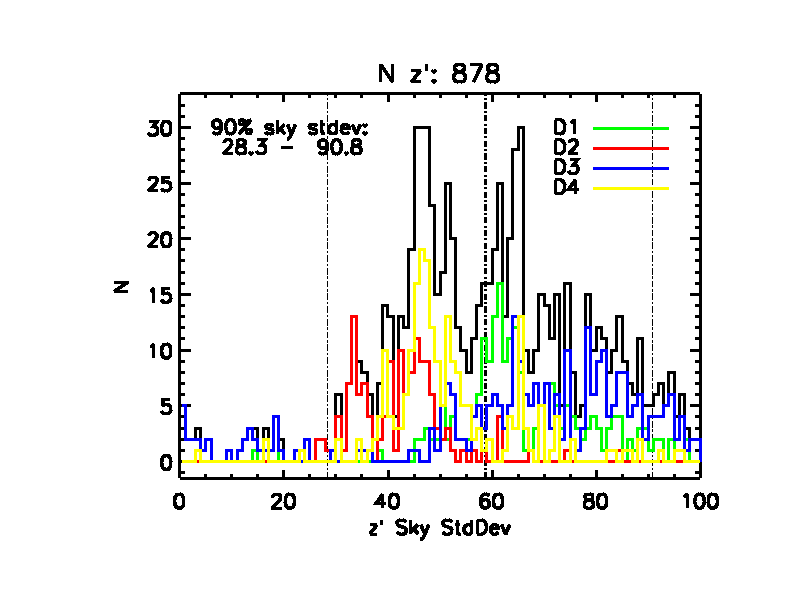



The fundamental impact on limiting magnitude from the sky comes from the sky noise per pixel. The sky sigma per pixel for each individual frame was calculated during the fluxscale calculation, with the resulting distributions plotted below. The range that encompasses 90% of the sky noise variation is indicated by the thin vertical dot-dashed lines and is annotated on each plot.
I have now included the sky and sky noise for each epoch in the schedule files used for the Monte Carlo experiments. We co-add all the frames for a given epoch to do our detection, so I computed the values by computing the average sky for each epoch and dividing the average sky noise in those frames by sqrt(Nframes). I have now implemented the sky noise variation into the Monte Carlo survey efficiency experiments as follows:
DeltaMlim = 2.5*Log10(skysig_ref/skysig),
where skysig_ref is the sky sigma for the images I used in the artificial star experiments and skysig is the sigma in the sky for the observation in question. This results in a brighter frame limit if the observation has more sky noise than the reference image and a fainter limit if the observation has less sky noise.



